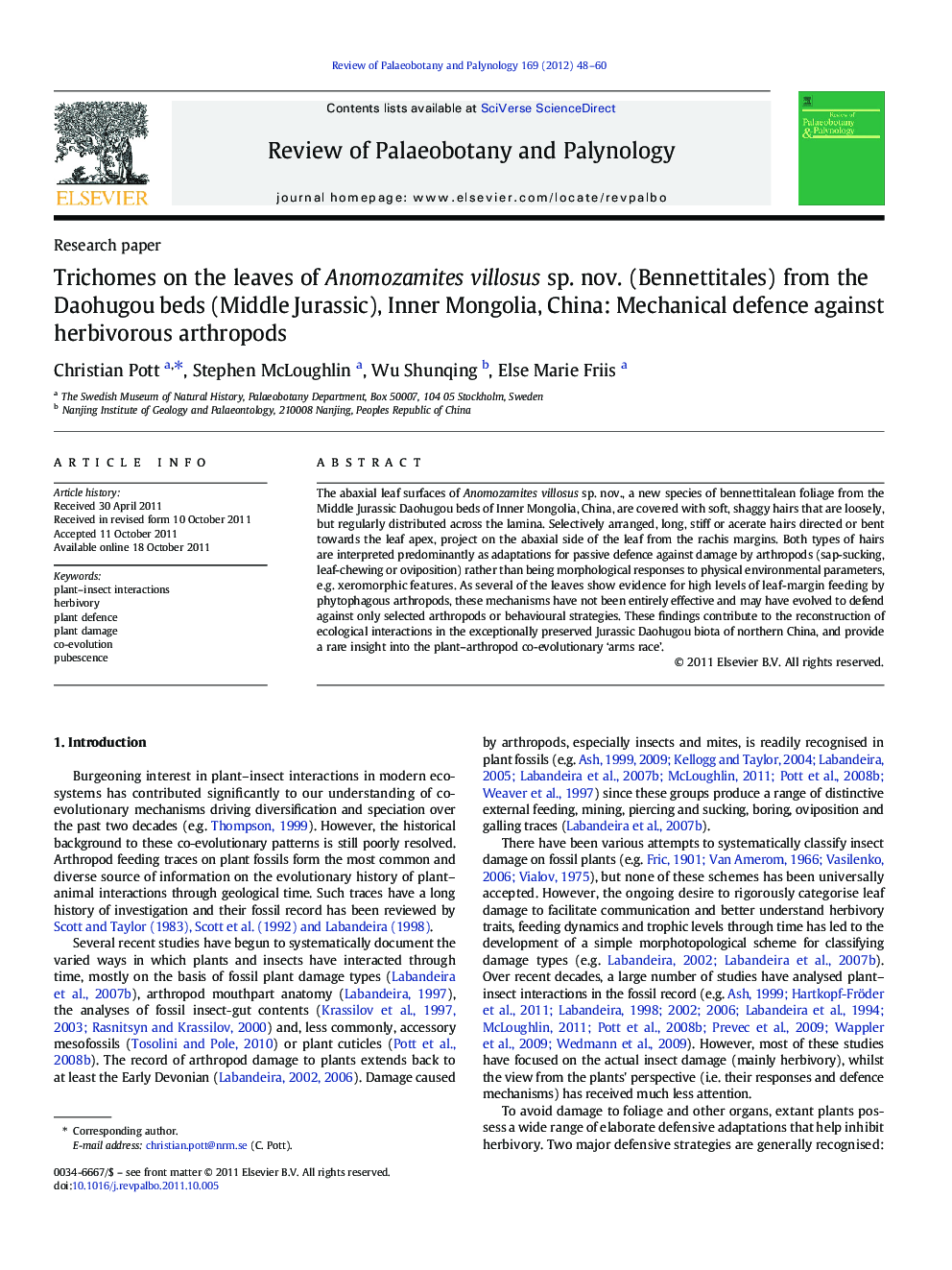| Article ID | Journal | Published Year | Pages | File Type |
|---|---|---|---|---|
| 4750808 | Review of Palaeobotany and Palynology | 2012 | 13 Pages |
The abaxial leaf surfaces of Anomozamites villosus sp. nov., a new species of bennettitalean foliage from the Middle Jurassic Daohugou beds of Inner Mongolia, China, are covered with soft, shaggy hairs that are loosely, but regularly distributed across the lamina. Selectively arranged, long, stiff or acerate hairs directed or bent towards the leaf apex, project on the abaxial side of the leaf from the rachis margins. Both types of hairs are interpreted predominantly as adaptations for passive defence against damage by arthropods (sap-sucking, leaf-chewing or oviposition) rather than being morphological responses to physical environmental parameters, e.g. xeromorphic features. As several of the leaves show evidence for high levels of leaf-margin feeding by phytophagous arthropods, these mechanisms have not been entirely effective and may have evolved to defend against only selected arthropods or behavioural strategies. These findings contribute to the reconstruction of ecological interactions in the exceptionally preserved Jurassic Daohugou biota of northern China, and provide a rare insight into the plant–arthropod co-evolutionary ‘arms race’.
► New foliage species of Bennettitales described from Daohugou biota, China. ► Exceptionally preserved hairs and indumentum in impression fossils. ► Several leaves damaged through arthropod margin feeding. ► Hairs and indumentum interpreted as defence mechanism. ► Most likely culprits sap-sucking and ovipositing arthropods. ► Daohugou insect groups briefly reviewed and potential herbivores discussed.
